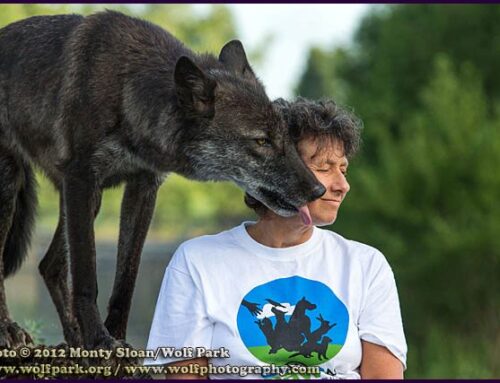Recently I paid a visit to a couple hoping to rehome a dog who from their description sounded as if she behaved aggressively due to fear. After a failed attempt to euthanize the dog (they couldn’t go through with it) they consulted with two other trainer/behaviorists. The couple lived nearby and I knew that a dog with a history of biting to get its point across is not a good candidate for rehoming and that after paying for two consultations and seeing some, but limited change in their dog’s behavior the owners might be reluctant for yet another expense, I offered to stop by and meet the dog at no cost to them. I wanted to meet the dog that cheated death.
When I decided to meet them it wasn’t because I believed I had the magic cure necessary to turn the dog into their perfect pet, but after hearing about the treatment prescribed by other trainers I thought that because I had a different take on the problem of fear aggression, I might be able to offer them a different set of training tools to work with. I understood what other trainers had suggested and why, and some of their suggestions had helped, and my curiosity was piqued.
I sat at their kitchen table assured that the dog would not bite me so long as I was sitting down. I wore my thickest jeans just in case and asked that the dog be on leash. The owner gave me one final warning, “Be careful, she’s cute.”
What appeared to be a long-haired German Shepherd in a corgi body rushed over to check me out, jumped up, gave a sniff and quickly raced off to gobble up the treats I tossed for her. After sweeping the floor clean she came over to me jumped up again, then sat at my feet, tail wagging, giving me one of those ‘I’ll have more of those anytime now thanks’ looks. A few more rounds of treat tossing and I had her targeting my hand, she was not only cute, she was a quick study.
I knew better than assume that the bad behaviors the owners had described were all in their head or their fault, and I got a glimpse of it when I mistakenly moved too fast for the dog’s liking, but her response, though sudden and swift, was controlled, and her willingness to forgive my indiscretion was without hesitation. She had been ok with me petting her on the head, when I, without giving her a clear indication of what I was going to do, in effect asking her permission first, turned my hand and touched her chest. That was decidedly not ok. I was lucky (I think it’s John Rogerson who talks about having buckets, one filled with luck and the other experience and I had just used a ladle full from my luck bucket). There was lots of information in her response. This was why the dog was living with a commuted death sentence.
What I saw was a dog that was not fearful as much as one with very clear lines about what was acceptable in regard to her sense of personal space and safety. At the same time she would happily cross those lines once the outcome was clear, and in my case it meant a piece of some kind of fabulous food would be offered to her. It wasn’t that she didn’t like being handled, or didn’t like strangers, it was as if she needed to be able to predict what the handling and presence of someone new meant to her. When she wasn’t given the information in advance her early warning signals, such as growling, were out of service and she immediately responded with her mouth. It was very effective.
When I left she would have readily accompanied me, and I kept wondering, why was this dog having such a hard time learning to behave appropriately around people? Answers had been offered as to ‘why’ the dog behaved as she did. She needed a job. She thought her job was to protect her owners. She needed to learn who was tops in the household hierarchy.
Assumptions were made about why the dog was behaving the way she was, and so remedies were prescribed which were meant to address the ‘whys’ of the behavior. In some cases the dog was able to figure out different, acceptable behaviors to get what she wanted, but in many others cases, she was not. Not only were guesses (albeit educated ones) made regarding the motivation for the dog’s behavior (and again to quote John Rogerson, “We have all the theories, dogs have all the facts”), the dog was required to guess what solutions she needed to come up with in regard to keeping people behaving appropriately as far as she was concerned, and getting the attention she wanted. Everyone was frustrated by the process. But when presented with a clear picture of what worked for both the dog and handler, she was more than willing to fulfill her end of the bargain.
Many of us living with dogs with behavioral challenges look for the piece of the jigsaw which if only we could find, would make the picture complete. The dog with its new found purpose in life no longer has to be insecure around strangers, or knowing who the pack leader is, no longer needs to worry about riding in the car or being sniffed by other dogs. And maybe it is the case that this piece does solve the problem, but I suspect more often than not it’s only another edge piece of the puzzle, the expanse of solid blue sky is still waiting to be constructed.
I don’t know if I’ll ever see this dog again or where she’ll end up but I hope that someone is able to take the guesswork out of learning for her. Not only is she cute she seemed happy to change her opinion about what was ok and what was not.






